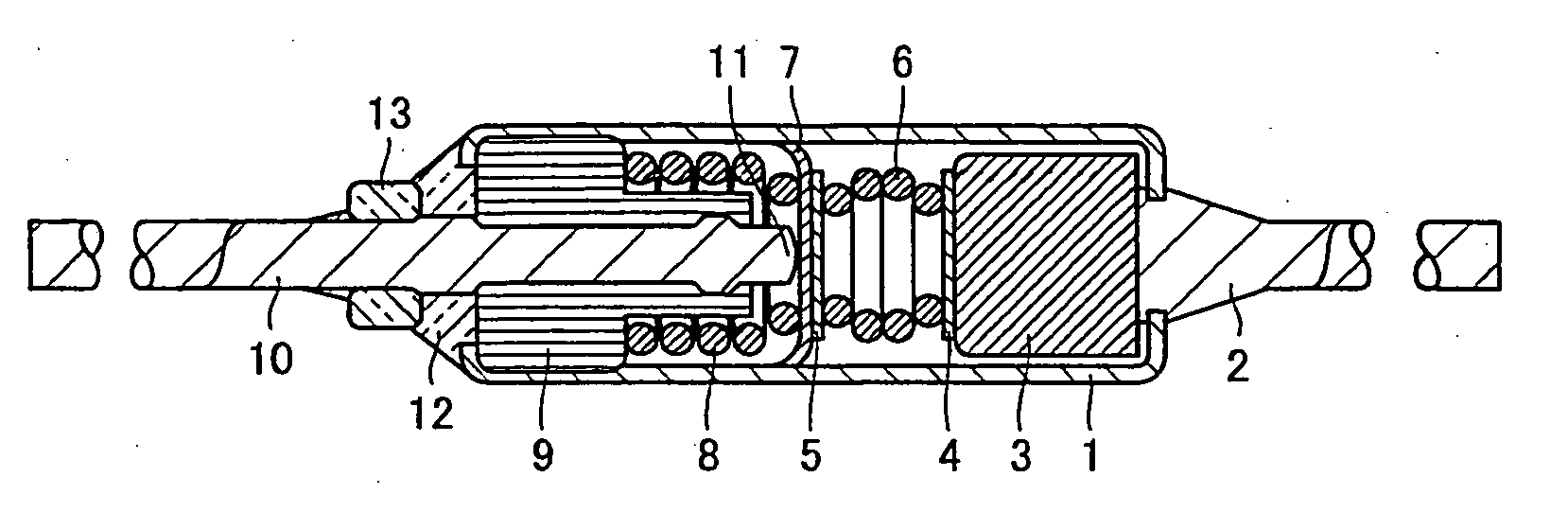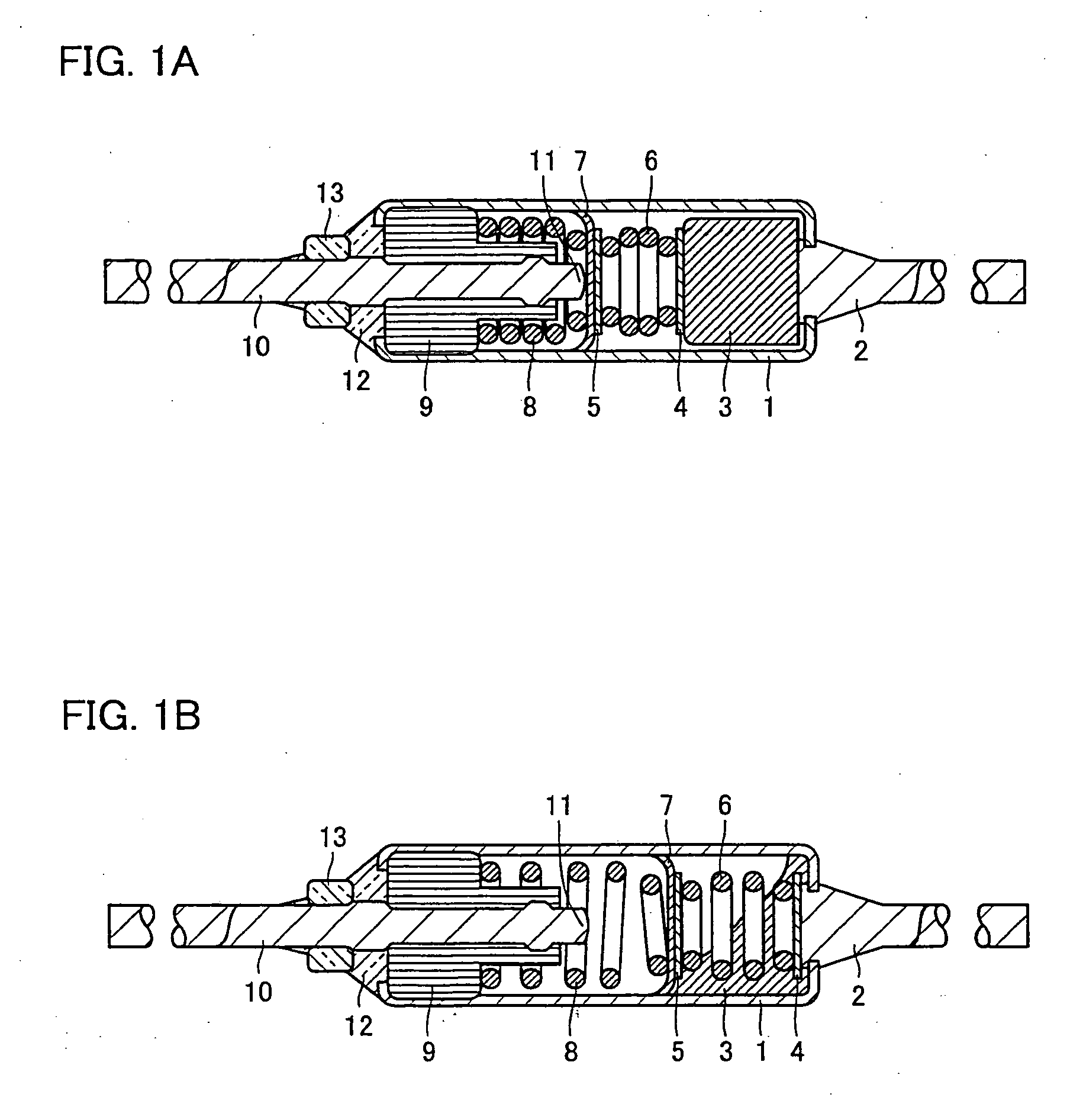Temperature sensing material type thermal use
a temperature sensing material and thermal use technology, applied in the direction of thermally actuated switches, electric switches, electrical apparatus, etc., can solve the problems of external moisture entering the casing, material softening, deformation, etc., to improve mechanical properties including moldability, improve chemical properties, and enhance electrical characteristics
- Summary
- Abstract
- Description
- Claims
- Application Information
AI Technical Summary
Benefits of technology
Problems solved by technology
Method used
Image
Examples
first example
[0020]FIGS. 1A and 1B show a thermal fuse using thermosensitive material of the present example. FIG. 1A is a cross section thereof at room temperature as normal, and FIG. 1B is a cross section of the thermal fuse in operation when it is abnormally heated. The present thermal fuse is configured of: a cylindrical, metallic casing corresponding to an enclosure 1 formed of copper, brass or similarly good conductor and presenting satisfactory thermal conductance; a first lead member 2 crimped and thus fixed to one opening of the casing; a switch function component including a thermosensitive material 3, a pair of pressing plates 4 and 5, a spring member 6 in the form of a strong compression spring, and a movable, conductive member 7 in the form of a movable contact formed of silver alloy satisfactorily conductive and adequately resilient, and a spring member 8 in the form of a weak compression spring, all accommodated in the casing; an insulated bushing 9 inserted into the other opening...
second example
[0022] The present invention in another example provides a thermal fuse having a simple structure using a thermosensitive material of thermoplastic resin, as described hereinafter. This thermal fuse includes, similarly as has been described in the previous example, a thermosensitive material formed of thermoplastic resin fusing at a particular operating temperature, a cylindrical metallic casing accommodating the thermosensitive material, a first lead member crimped and thus fixed to one opening of the casing and allowing the casing's internal wall surface to serve a first electrode, an insulated bushing inserted into and thus fixed to the other opening of the casing, and a second lead member penetrating the bushing and having an end serving as a second electrode, and further includes two flat plate springs sandwiching the thermosensitive material to provide both the function of a movable conductive member and that of a spring member, the flat plate spring being arranged between the...
third example
[0025] In the present example, a thermal fuse using thermosensitive material is configured as follows: A cylindrical insulated tube accommodates thermosensitive material. First and second lead members are fixed to the tube's openings, respectively. First and second electrodes are formed each at a portion of an internal wall surface of the casing. A spherical conductor movable from a conducting position to an interrupt position of the first and second electrodes is accommodated in the tube. The spherical conductor is pressed by a spring toward the thermosensitive material with a spherical insulator posed therebetween. The spring is arranged at one end of the tube and presses the spherical conductor against the thermosensitive material via the spherical insulator. As normal, the conductor is in contact with the internal wall surface's first and second electrodes and positioned to maintain a circuit's conduction state. As temperature increases and the thermosensitive material's tempera...
PUM
 Login to View More
Login to View More Abstract
Description
Claims
Application Information
 Login to View More
Login to View More - R&D
- Intellectual Property
- Life Sciences
- Materials
- Tech Scout
- Unparalleled Data Quality
- Higher Quality Content
- 60% Fewer Hallucinations
Browse by: Latest US Patents, China's latest patents, Technical Efficacy Thesaurus, Application Domain, Technology Topic, Popular Technical Reports.
© 2025 PatSnap. All rights reserved.Legal|Privacy policy|Modern Slavery Act Transparency Statement|Sitemap|About US| Contact US: help@patsnap.com


